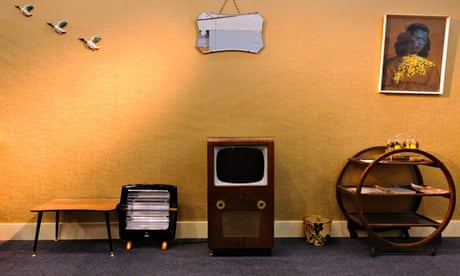Advertising agencies are experts at getting people to change their behaviour. Sometimes they do this for a cause, a charity, an NGO or in the public interest. Much more often they do it to persuade you to buy product B rather than product A. It's how they earn their money, serve their client's interests and, as a by-product, attract a lot of opprobrium – sometimes deserved, sometimes not. But the fact remains, they're stuffed full of clever, creative people and they can get you to do things you might otherwise not.
It is of course axiomatic that, as developed-world consumers, we are going to have to change our ways or face the reality of using up our planet and its resources in the almost foreseeable future. This means behavior change, in the ways we eat, recycle, commute, take holidays, raise our children, buy and build houses, work, consume - every aspect of our lives, in fact. Advertising agencies have a crucially important role here, one they are slowly waking up to but struggling to come to grips with.
Millennials and younger people in general are more aware of the need for action on sustainability and more demanding of their employers and workplaces when it comes to having at least some 'purpose beyond profit' in their professional lives. There's a natural and inbuilt momentum for change.
Big business is alive to all this. Increasing numbers of companies now have sustainability, corporate social responsibility and ethical behaviour woven into their growth plans, not confined to a CSR department but dealt with in the CEO's and CMO's offices. Most ad agencies haven't caught up. They haven't developed the language, strategy development tools, processes, skills, metrics and capabilities to lead the discussion and show their clients the way. Here are six ways to resolve this.
1. Get its act together
Understand that the marketing community is serious about "doing well by doing good" and that clients will seek advice where they can best find it. If the ad community doesn't get its act together, it will be media companies, management consultancies and designers who take up the slack. Awards show and creative education charity D&AD recently made a film with Swarm asking leading creative practitioners "what does climate change mean to you and your agency?". The answer was "not very much".
2. Put its money where its mouth is
The senior people that run businesses that advise other businesses have a responsibility to put their own houses in order before they dispense that advice. This means auditing practices to make them as sustainable as possible. There are plenty of people who have more experience doing this than you do and they're worth listening do. Try Julie's Bicycle.
3. Join a 'coalition of the willing'
No one is going to solve this on their own. The example set by the tech and start-up communities is a good one, where sharing, partnership and collaboration are the norm and generosity of spirit (usually) prevails. We have to create open source solutions that benefit the community as a whole, something that is sadly counter-intuitive in a very competitive industry.
4. Create new measurement, payment and incentive system
As well as new strategy tools and capability building we need new ways to measure the economic benefits of more sustainable business practices. Big brand owning companies haven't turned into philanthropists overnight and they have boards and shareholders. They need to be able to demonstrate that doing the right thing is the right thing to do commercially. And the ad business needs new payment and incentive mechanisms that recognise and reward agencies' contributions in this new arena. As the ad agency business has, in its 180 year history, succeeded in inventing two really bad remuneration systems (commission and cost plus) perhaps we shouldn't hold our collective breaths on this last point. But it can be done.
5. Adopt a youth policy
While it may sound trite, often the younger people within companies are more aware, literate, passionate, committed and able to address these issues than older employees and colleagues.
6. Seize the moment
Ad agencies were once the trusted advisers of their clients. They experimented, researched, trawled the world for inspiration and cool new ideas and habitually took the initiative. They had what were effectively R&D budgets and seriously deep and broad talent pools.
The best agencies still think and behave this way, but a lot have had precious resource eroded by the eternal negotiation with client procurement – a process that never ends but only goes in one direction – and have ended up in a place where they struggle to get the day job done.
I recently heard a very senior chief marketing officer say that she was fed up with hearing ad agency creative directors trying to persuade her to buy a piece of work for her brand that might have been fit for purpose in 1995. The positive news here is that there's still an opportunity to lead the charge. But it won't happen when the ad business is still using tools and vocabulary invented in the 60's to take advantage of the launch of commercial TV. There's work to be done.
Tim Lindsay is the chief executive of D&AD
The sustainable living hub is funded by Unilever. All content is editorially independent except for pieces labelled advertisement feature. Find out more here.
Join the community of sustainability professionals and experts. Become a GSB member to get more stories like this direct to your inbox
